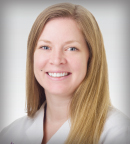Advancements in cancer therapies have led to increased survival rates, but this progress has come with a cost: many life-saving treatments may impair fertility, leaving patients and cancer survivors grappling with the potential loss of their reproductive abilities. Oncofertility, a field that bridges oncology and reproductive medicine, has emerged to address these concerns and provide fertility preservation options to patients with cancer.
At the recent National Comprehensive Cancer Network (NCCN) Policy Summit on Sexual and Reproductive Health in Cancer Care, Kristin Smith, BSc, Fertility Preservation Patient Navigator at Northwestern’s Lurie Cancer Center, Chicago, delivered a keynote address on the critical role of patient navigators in oncofertility care. Drawing from her extensive experience consulting with newly diagnosed oncology patients and young adult survivors, Ms. Smith highlighted barriers to fertility preservation and ways dedicated navigators may improve access and outcomes.

Kristin Smith, BSc
According to Ms. Smith, one of the key challenges in providing oncofertility services is the time-sensitive nature of cancer treatment. “There is often an extremely urgent need to initiate therapy, and for oncologists, there isn’t always the thought process to bring up fertility preservation in this extenuating circumstance,” she commented. “In addition, referral pathways to reproductive specialists may not be well established, which can lead to delays in care.”
Bridging the Gap
To address these barriers, Ms. Smith underscored the importance of having a dedicated patient navigator, who can bridge the gap between oncology and reproductive medicine. By providing comprehensive counseling, coordinating appointments, and navigating insurance coverage, the navigator ensures that patients can access fertility preservation options without delaying their cancer treatment.
The impact of a standardized oncofertility program and dedicated navigator is evident in the data. Ms. Smith presented several charts revealing significant increases in referral rates and uptake of fertility preservation services at both Northwestern and other institutions following implementation of these interventions. One example came from Johns Hopkins, where an interdisciplinary effort to educate staff and establish referral pathways led to a 45% increase in oncofertility discussions in just a year and a half.
“This fellow-led program is one of my all-time favorite examples of how if you build it, they will come,” Ms. Smith remarked.
To be effective, Ms. Smith argued, patient navigators need to be excellent communicators who can bridge the gap between various subspecialties and understand the nuances of insurance coverage for fertility preservation. “You need someone who understands how to communicate with oncologists, reproductive endocrinologists, urologists, and all of the staff,” she explained. “Navigators also play a key role in educating providers, fellows, and staff about oncofertility, ensuring that the entire care team is equipped to support patients’ reproductive health needs.”
Challenges in Providing Fertility Preservation Services
Despite the clear benefits of oncofertility navigation, however, Ms. Smith presented a survey of patient navigators across North America that was led by Antonia Leavitt, DNP, and revealed significant challenges. Many navigators are able to dedicate only a small portion of their time to oncofertility care, limiting the number of patients they can serve.
“Cost is a huge barrier for fertility preservation services when there isn’t insurance coverage and when it hasn’t been made a priority,” Ms. Smith continued. “Navigators also highlighted the need for more reproductive specialists to partner with cancer centers and for increased staff support to ensure timely referrals and care coordination.”
To overcome these challenges, Ms. Smith and her colleagues in the Oncofertility Consortium’s patient navigator group have proposed several solutions. They include expanding training opportunities for navigators, establishing clear referral pathways, improving scheduling and access to reproductive specialists, and advocating for increased funding and protected time for oncofertility care.
“If you build this referral network and have answers to the questions you’ll be asking patients, they will want to see reproductive specialists,” Ms. Smith emphasized. “They’ll want to have these additional conversations.”
Ultimately, said Ms. Smith, as cancer care continues to evolve, the integration of oncofertility services and the role of patient navigators will become increasingly important. “By prioritizing fertility preservation and providing dedicated support to patients, we can ensure that cancer survivors have the opportunity to build the families they desire and live full, meaningful lives beyond their diagnoses,” she concluded.
DISCLOSURE: Ms. Smith has received an honorarium from EMD Serono.

